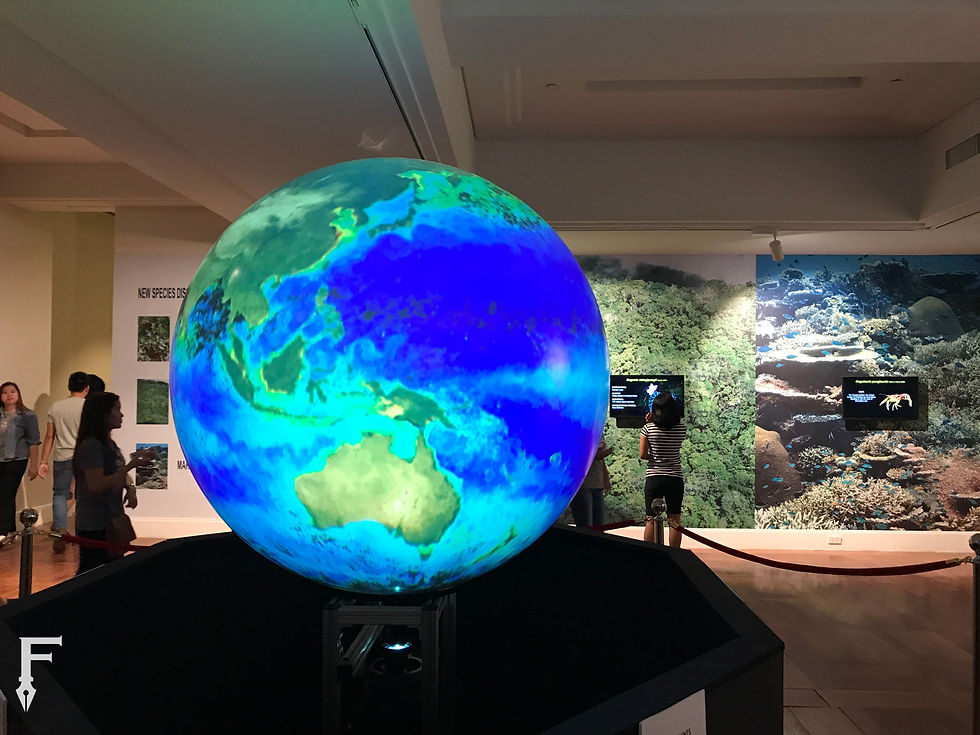Nat’l Museum of Natural History opens for 116th anniversary
- by Dexter Tilo
- Oct 31, 2017
- 3 min read
Guests flock the National Museum of Natural History as it opened several galleries for public viewing as part of the National Museum’s 116th foundation anniversary.

Guests are lining up for the entrance of the 10 am schedule in front of the National Museum of Natural History. Photo by Dexter Tilo/THE FOURTH
A limited number of 900 guests gathered inside the venue for the National Museum of Natural History’s Open House— a one-day preview of exhibitions to experience the courtyard and see the Tree of Life.
“As the name implies, the National Museum of Natural History will showcase our biodiversity, our animals, plants, and minerals that we can find in the Philippines, and that can only be found in the Philippines,” Marivene Santos, a biologist and a researcher for the zoology division explained.
The guests toured around the two opened galleries that day— from a closer look to the Tree of Life by Architect Dominic Galicia, to the 11th and 12th galleries, which showcased the replica of the world famous crocodile, Lolong. A high-tech globe which aims to highlight biodiversity and climate change was also opened to the public.
According to Santos, Filipinos and foreigners will be introduced to the country in a different way because of the museum.
“Mas malalaman nila ang Pilipinas. Ito talaga ang Pilipinas,” Santos stated. (They will know more about the Philippines. This is the Philippines.)
Tree of Life and the Museum’s Structure
The Tree of Life has easily become the icon and one of the biggest attractions in the museum, where it stands from the ground floor towards the fifth floor of the building.

Photo by Dexter Tilo/THE FOURTH
University of the Philippines (UP) law student and archeology degree holder, Kathleen Tantuico, said that the Tree of Life was the highlight of her trip.
“I’ve been seeing pictures of this [Tree of Life] online, and then I didn’t know it was the Tree of Life. I just thought it was just a façade, but today, I found out that this was the Tree of Life and it makes sense since it’s the flora and fauna of the Philippines that’s being displayed today,” she said.
The Tree of Life was brought to existence by Architect Dominic Galicia, head of Dominic Galicia Architects. It was only a new addition to the building of the museum.
Originally, the plan was to make the structure a DNA Helix, but according to Santos, there were fears that the building would not be able to withstand it.
The building was structured in a neo-classical style, almost identical to the nearby museum, the National Museum of National Anthropology, and used to house the department of agriculture in the 1940s to 1959 and was eventually turned over to the department of tourism.
“We maintained the neo-classical look, but sa loob, na reinforce natin ‘yung mga foundation kasi luma na ‘yung mga foundation nito,” Santos said.
(We maintained the neo-classical look, but on the inside, we had to reinforce the foundation because they were already old.)
The museum holds six floors: the top floor holding the function room while the succeeding floors holding the more than ten galleries.
According to Santos, guests would enter from the ground floor in the orientation area, ride the elevator in the Tree of Life to the fifth floor, and start their tour from there until they reach the last gallery on the second floor.
The museum also holds research facilities, where sample specimens from different parts of the Philippines are being deposited for study and to be displayed eventually.
Also in the building is a replica of Lolong, the largest crocodile in captivity, made in about 6 months using fiber glass and plastic; the original specimen is also inside the building and is currently kept until it is ready for the Grand Opening.

Photo by Dexter Tilo/THE FOURTH
A high-tech rotating globe projecting the world is also present, which highlights biodiversity ocean currents, and the rising sea-levels around the globe.

Photo by Dexter Tilo/THE FOURTH
Discussion on Climate Change and Natural History
Both Tantuico and Santos believed that visiting the museum could elevate discussions on climate change.
“It presents what the flora and fauna is here in the Philippines,” Tantuico said.
“Students and Filipinos are able to see what exactly the side, how well we are in terms of science, and what makes the Philippines special when it comes to being a home to these animals and plants and other landscapes,” she added.
According to Santos, the rotating globe will also be utilized to send a message by projecting climate change on it as it affects the Philippine biodiversity.
The National Museum of Natural History will remain closed for the duration of the year, and its target grand opening is on the second or third quarter of 2018— once all the other galleries are ready for the public.











Comments